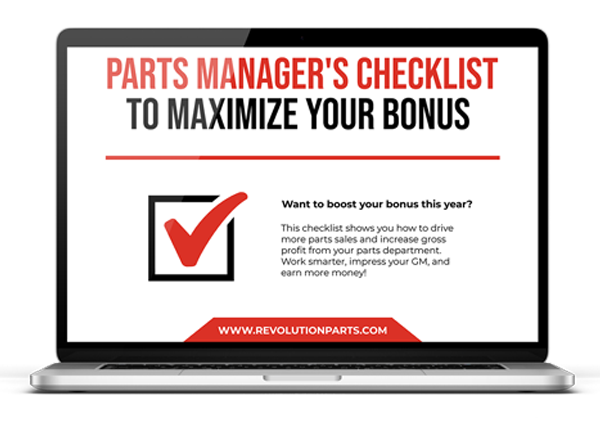Starting a new eCommerce strategy is an exciting opportunity, but it can also have many challenges for your specialty automotive parts business.
It requires new strategies, approaches, and tactics to help measure your progress. This may be uncharted territory for many specialty automotive parts retailers, but it’s essential to understand the scope of the eCommerce market.
So, here are the top four things you need to know before launching your specialty automotive parts website.
Learn Your New Tools
It doesn’t matter if you’re starting from scratch or making a few changes; you need to learn your new eCommerce system inside and out. Dedicate time to learn how to use new eCommerce tools. When you feel comfortable with them, focus on training your team to use them effectively. Your eCommerce success depends on your ability to establish the right skills to implement new strategies, measure, revise, and understand them.
What are some of the most important tools you need to learn when starting your new eCommerce strategy?
Management Tools
To effectively grow your online parts business, you need to understand how to manage every aspect of it. Your management tools can include everything from inventory management to shipment tracking to customer relationship management (CRM).
Marketing Tools
You can’t grow your business online without getting your business out there to customers. Spend time focusing on how to implement a new digital marketing strategy. This includes learning marketing tools like email marketing, search engine optimization (SEO), and ad campaigns.
Customer Engagement Tools
Maintaining steady business depends on your ability to foster customer loyalty. To do this, you need to understand how your customers are interacting with your business and engaging with your marketing. Focus on learning how to use tools that help you measure customer engagement and how to look at specialized customer data to make more personalized buying experiences
Collecting Data Takes Time
You won’t be able to start scaling your business until you have enough data to make informed decisions from. Collecting quality customer data can help you create personalized buying experiences, understand sales trends, improve customer service operations, and influence marketing messaging.
Without robust customer data, you can’t effectively meet the needs of your customer base. Allowing yourself enough time to collect that data is essential.
What data do you need to collect and pay special attention to?
Purchase History
To make personalized product recommendations for future purchases.
Ad Campaign Metrics
Measure click-through-rates (CTRs), audience reach, and conversions to tailor your ads and set ad budgets in the future.
Email Campaign Metrics
Measure click-through-rates (CTRs), open rates, and conversions to tailor your emails and create templated campaigns for future use.
Customer Reviews
Build brand loyalty and consumer trust through customer reviews hosted on your website.
Collecting enough data in these primary areas can help you make informed decisions across all aspects of your online business. Best practices suggest that you allow between one to three months to collect enough customer data.
Make An Adjustable Marketing Plan
This is perhaps the most important step in the process that many retailers neglect. Create a rough draft marketing plan. You can’t expect to scale your online business if you don’t get it in front of as many consumers as possible. Letting your website sit there does you no good.
The right digital marketing strategy can help you scale your parts business, but it has to be adaptable. A fixed marketing strategy will restrict you, making it more difficult to create or implement new techniques when needed across different stages of the customer journey. This is a mistake that many online retailers make.
Your digital marketing strategy should allow you to do the following things.
Scale Up/Back Your Target Customer
Your target customer base may not be what you think it is. You should be able to make adjustments in your marketing strategy that reflect your demographic data. This will allow you to adjust your messaging and try different ad or email types.
Create On-Brand Messaging
Flexible marketing allows you to create marketing materials with messaging that matches your brand as it evolves. Test different messaging across ads and emails to see what sticks among your target audience.
Fit Different Customer Profiles
Your customer base is composed of different types of customer segments, each with its own distinct flavor. They respond to different types of marketing messaging and approaches. To market to them effectively, you need room to try and test different marketing tactics to see which resonates with them best. Utilize customer feedback to your advantage during this step.
Don’t Skip Testing
Above all, don’t forget to test your tactics. Testing is key to getting started on the right foot. Without substantial testing, you won’t know where the pitfalls are in your processes, how effective your marketing is, or what next steps you need to take to improve the buying journey for your online customers.
Before you officially spin up your new specialty automotive parts website, you need to test the following components:
Your Website
Test that your website is running smoothly. Ensure that payment gateways are secure, site pages aren’t broken, and product navigation works. Test your site to make sure it works on mobile and desktop.
Data Collection
Ensure that your data collection is accurate. Double-check order information, sync your inventory management systems, and make sure your customer contact information is accurate.
Ad Campaigns
Test your ad campaigns to determine the best budget, ad copy, duration, and audience segmentation.
Email Marketing Campaigns
Split-test your email campaigns to identify your best messaging, send times, subject lines, and audience lists. Use analytics tools to help you understand your test results.
Testing is crucial to every aspect of your strategy, so don’t be afraid to take the time to test properly. It’s a marketing mistake you don’t want to make.
Get Started On The Right Foot
Launching a new eCommerce strategy can be challenging, but you can overcome them easily with the right preparation. Test your tactics, take the time to collect necessary data, create an adjustable digital marketing strategy to meet your customer’s needs, and learn new eCommerce tools to help you maintain steady sales growth.
Ready to take your next steps? We’ll help you get there. Book time with one of our experts to help you get the eCommerce strategy that works best for you.




